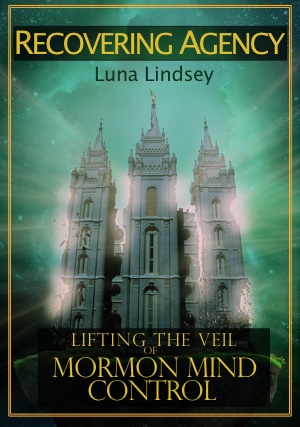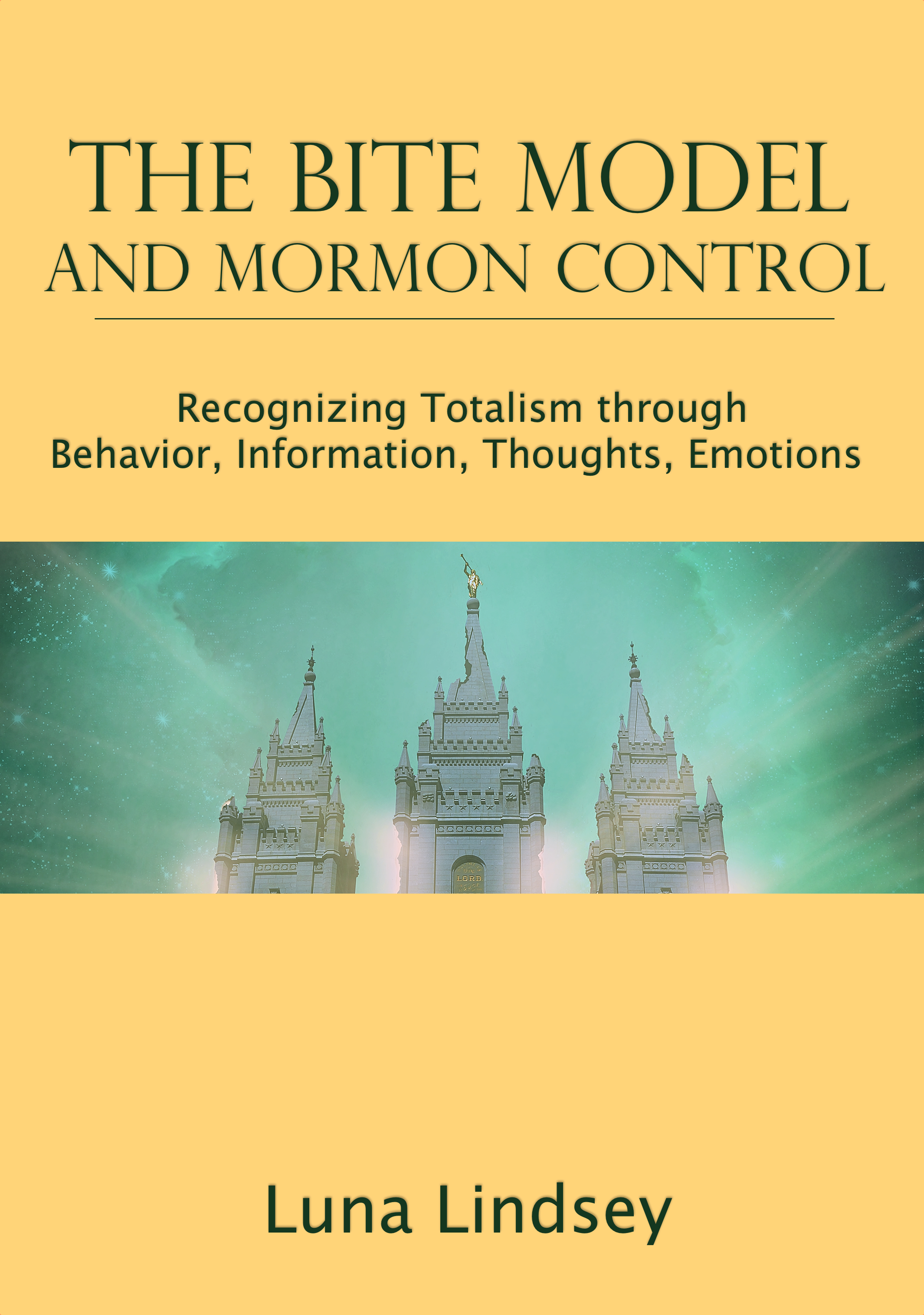Analysis of The Prophet Joseph Smith: Teacher by Example by Thomas S. Monson, delivered at LDS General Conference, Sunday Morning, October 2005.
Monson is one of the story-tellers, and he has a very nice, soft, calm, kind voice. It used to make him my favorite conference speaker. Now I know that the calm voice causes trust, and the stories cause people to dissociate, to relate to the characters. It draws them outside of awareness and dampens their critical thinking skills. This in and of itself isn’t bad, and is used for entertainment and education in many media (there it is known as “suspension of disbelief”). However, when coupled with deception, emotional traps, guilt-inducement, self-abasement, reframing, and other mental tricks, it constitutes mind control.
The overarching theme of this talk is learning by example. One aspect of mind control is “change the behavior first and the beliefs will follow”. Many dictates of cult groups are not expressly commanded or written. New members learn behaviors by watching fellow members while trying to “fit in”. Implied morals underlie stories. A new member will match these expected behaviors to avoid embarrassment and to find approval, even if they don’t yet believe or even understand the specific teachings behind the behaviors. But after time, they come to believe because they have acted first.
Monson begins with a well-known story about an operation on Joseph Smith’s leg during childhood. The doctors suggest tying down Joseph’s arms so he won’t thrash, but Joseph refuses. They offer alcohol to ease the pain. Joseph also refuses. He undergoes the operation without any fuss, and his leg was miraculously cured.
From this, Monson says we should learn courage. But instead, we learn it is good suffer, even when relief is available. If Joseph could do it, so can we. This is an example of “doctrine over self”.
Next, he tells the story of the First Vision. He only tells the authorized version. Members are oblivious to the fact that there are multiple conflicting First Vision stories. There are also historical facts surrounding this story which are contradictory. For example, Monson relays that there was a religious revival in New England in the 1820s, which is also not true. There were revivals in 1816-1817 and later in 1823-1824. This is an act of ongoing deception regarding Church history.
Yet Monson tells us that Smith stuck to his story, even in the face of persecution. The moral of this? Ironically, Monson says it’s “honesty”. This is an example of double-speak.
Then he talks about missionary work. Cults are preoccupied with bringing in new members, and this is yet another reminder.
Monson tells of the martyrdom. Smith was arrested on “trumped up charges”. When the mob stormed the prison, he acted selflessly by running to the window, in the hopes of saving the others, thereby giving his life for them. From this, Monson thinks we should learn love.
Aside from the historical controversy over just what happened that day, we’re expected to believe that Smith’s running for his life was a selfless sacrifice. This seems to me an obvious deception. We can’t conclude either way what his motive was, but the most likely explanation is that he fled out of fear, not love.
Worse, Joseph Smith was not in jail on “trumped up charges” by ruthless men who sought only to destroy the True Church. In fact, Smith had been arrested for having the printing press of the Nauvoo Expositor destroyed, because,among other things, it had revealed to the Mormon population that Smith engaged polygamous marriages. Censorship on the part of Smith, deception on the part of Monson.
Monson claims 12 million church members believe Smith to be a prophet of God. This is another deception, as at least 50% of those members are disbelieving inactives, who don’t even feel it necessary to claim “LDS” on census surveys.
He is also hinting that this is “proof” that Smith was a Prophet. As the saying goes, “12 million people can’t be wrong”. But 12 million people certainly can, and have been wrong about a great many things. If we go by number of votes to prove the truth of something, then Islam is more true that Mormonism, with 1.2 billion followers.
Then he tells a story of two missionaries he knew while serving as Mission President in Canada. While proselyting, these missionaries were told by a homeowner to never return. One missionary took, “You can’t tell me you really believe that Joseph Smith was a prophet of God, anyway!” as an open invitation to go back immediately, and bear his testimony.
The man yelled at them again, but later converted — after a sleepless night and a phrase from the missionary’s testimony repeated in his head, “Joseph Smith was a prophet of God. I know it . . . I know it. . . . I know it.”
Through this type of story, members learn that personal boundaries are unimportant. Bringing people into the fold (or keeping them there) is justification for ignoring the earnest requests of fellow human beings. It is no wonder that ex-members report time and time again that ward and family members pester them, even after making it perfectly clear that their attention is unwelcome. This is an example of “The ends justify the means”, a very common underlying cult philosophy.
Monson then quotes the famous saying by John Taylor, “Joseph Smith, the Prophet and Seer of the Lord, has done more, save Jesus only, for the salvation of men in this world, than any other man that ever lived in it.” This is a form of elitism, common to cults. It places Smith on a pedestal, and makes Mormonism The One True Church. It sets up us-vs-them thinking, and calls forth further dedication and devotion to all of Smith’s works — and to his heirs, the current leadership of the Church.
He concludes with a testimony, comprised mainly of a request that we learn from Joseph Smith’s life, incorporate his principles into our own lives, and that our lives reflect our knowledge that God lives, Jesus Christ is his son, that Joseph Smith was a prophet, and that today we’re lead by Gordon B. Hinckley.
This is actually more of a prayer than a testimony. He’s giving us a couple of subtle suggestions. First, that we take this entire talk to heart and live by it. (Modify our behavior to lead away from authentic self to match the group self). Secondly, he’s implying that every listener already has a testimony, by requesting that our lives reflect it. He doesn’t say “reflect our beliefs”, he says, “reflect our knowledge“. This is a great example of persuasive influence used after other methods have softened the brain.



